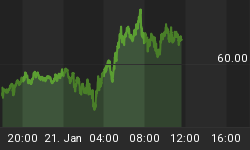The impact of interest rate differentials on FX is highlighted by the fact that the correlation between EURUSD and GE-US 10-year yields is now at +0.90, the highest since June 2007. Global bond yields may be rising across the board but the 10-year yield differential between Germany and the US continues to deteriorate for Germany, hitting 3-year lows at 0.73%. These increasingly meaningful differentials will continue to influence FX markets especially after JC Trichet indicated the ECB will extend its emergency collateral rules beyond 2010, while the Fed will conclude its MBS purchases next week. The yield differential story continues to favour the US dollar from both a short and long-term perspective. Aside from the 10-year yield differentials, EUR 3-month LIBOR hits fresh record low at 0.58% while USD 3-month LIBOR advances to its highest since September 2009.
Thus, even if a net creation of +170K US jobs is priced in the market for Fridays March payrolls, the actual materialization would further extend the LIBOR and 10- yr yield trend in favour of USD.

The euro may have rebounded off its $1.3260 lows but all eyes are on whether it will demonstrate another failed rebound as was the case 2 weeks ago (March 17). Even fundamental-oriented traders & strategists are watching the 18-week long downtrend in EURUSD. The trend line helps traders gauge whether any euro rebound marks the beginning of a new uptrend or simply a corrective move. March 17th was such a day when EURUSD posted an intraday break above the trend line (above $1.38) only to close the NY session well below ($1.3724).


Accordingly, only a Friday close above $1.3550 in EURUSD would represent technical requirement for upcoming stabilization in the single currency. Could the euro manage to break above the $1.3550 barrier on a day when US employment payrolls may show the first net increase since December 2007? The euros failure to meet key technical requirements against the US dollar is also revealed in gold (failed $1127), oil (failed $83) and even the solid Aussie (failed $0.9250), all of which continue to struggle against USD.
FX and commodity traders also take note of the emerging dead-cross formation developing in the CRB-index (index of 19 commodities), whereby the 50-day MA has fallen below the 100-day MA for the first time since May 2009. The last time such a crossover took place was in August 2008, before triggering a 53% collapse.
See my interview on CNBC's Trading Block today making the Intermarket case for further USD strength.















